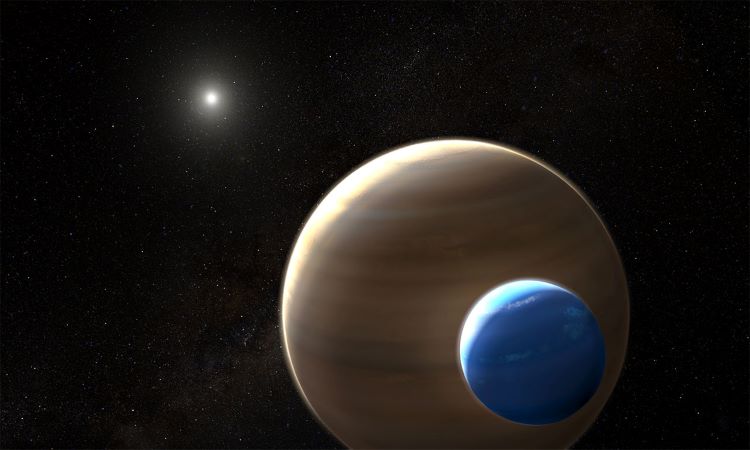Does the size of an exomoon help determine if life could form on an exoplanet it’s orbiting? This is something a February 2022 study published in Nature Communications hopes to address as a team of researchers investigated the potential for large exomoons to form around large exoplanets (Earth-sized and larger) like how our Moon was formed around the Earth. Despite this study being published almost two years ago, its findings still hold strong regarding the search for exomoons, as astronomers have yet to confirm the existence of any exomoons anywhere in the cosmos. But why is it so important to better understand the potential for large exomoons orbiting large exoplanets?
Dr. Miki Nakajima, who is an Assistant Professor of Physics and Astronomy at the University of Rochester and lead author of the study, tells Universe Today, “For Earth, the Moon plays a major role to determine the length of the day of Earth, ocean tides, and Earth’s spin axis tilt. These are extremely important parameters for life on Earth. Thus, understanding whether a planet has a moon or not would help us understand whether an exoplanet is similar to Earth or not.”
For the study, the researchers used a series of computer models to simulate how exomoons could form around an exoplanet based on the giant-impact theory that is the currently accepted model for how our Moon formed around the Earth. The researchers conducted these simulations using a variety of conditions, including rocky and icy exoplanets with the maximum target size being six Earth masses, the size and size ration of the impactor and target, along with a fixed impact velocity and impact angle for the impactor striking the target. In the end, the simulations produced some interesting results pertaining to the formation and evolution of exomoons.
“In my opinion, the most significant result is that our study made a prediction for future exomoon observations,” Dr. Nakajima tells Universe Today. “We predict that relatively small planets (< ~ 1.6 Earth radii) are good candidates to host exomoons. Up until now, most exomoon searches have focused on larger planets. So now we propose that future searches should instead focus on these smaller planets.”
As noted, this study was published almost two years ago, but its findings still hold true in terms of hypothesizing about the existence and potential future discoveries of exomoons, which could help astronomers better understand the conditions necessary for finding life beyond Earth. While the Earth’s Moon is responsible for allowing life to thrive on this planet, smaller moons throughout our solar system have demonstrated that size might not matter in terms of allowing life to potentially thrive on, or beneath, their surfaces. Examples include Jupiter’s icy moon, Europa, and Saturn’s largest moon, Titan, and its smaller icy moon, Enceladus. Given this study focused on exomoons forming around large exoplanets, what can exomoons, regardless of their size, teach us about finding life beyond Earth?
“In my opinion, a planet does not have to have a large moon to host life on its surface,” Dr. Nakajima tells Universe Today. “However, at least for Earth, the Moon plays a crucial role on the life on Earth. So, if we want to find a second Earth, a planet with a large moon would be a great candidate. I hope our study helps us to identify what planets likely host moons.”
In terms of follow-up studies that might have occurred in the two years since this study was published, Dr. Nakajima tells Universe Today that her and her colleagues have written a recent study about how the Earth’s Moon might have formed under a different process, and the paper is currently in peer-review. Additionally, Dr. Nakajima tells Universe Today she is currently participating in a proposal for NASA’s James Webb Space Telescope (JWST) with the goal of identifying exomoons orbiting relatively small exoplanets.
This 2022 study and upcoming JWST proposal both highlight how exomoons have come to the forefront for the search for life beyond Earth, and specifically beyond our solar system. While the existence of even one exomoon has yet to be confirmed, a growing list of exomoon candidates has garnered the attention of astronomers, with these exomoon candidates potentially orbiting both Jupiter- and Earth-sized worlds.
When will astronomers find the first exomoon, and how many exomoons will researchers find in the coming years and decades? Only time will tell, and this is why we science!
As always, keep doing science & keep looking up!

